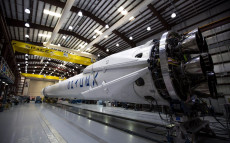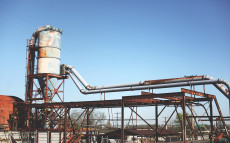- pathfindersAI
- Job Profile
Electro-Mechanical and Mechatronics Technologists and Technicians
Summary
Electro-Mechanical and Mechatronics Technologists and Technicians: A Promising Career Path
What They Do
Electro-Mechanical and Mechatronics Technologists and Technicians play a crucial role in the intersection of mechanical engineering and electronics technology. They are responsible for developing, testing, and maintaining automated and electromechanical equipment. This field integrates principles from various disciplines, including robotics, automation, mechanics, and electronics, to create machines that improve efficiencies in industries such as manufacturing, aerospace, healthcare, and consumer electronics. By leveraging their cross-disciplinary expertise, these professionals ensure that complex systems operate seamlessly and efficiently.
Job Responsibilities
The responsibilities of Electro-Mechanical and Mechatronics Technologists and Technicians are diverse and multifaceted. Key tasks include installing, maintaining, and repairing automated machinery and robotic systems. They design, test, and modify prototypes of new machinery, utilizing computer-aided design (CAD) software for simulations and analysis. Troubleshooting and diagnosing mechanical, electronic, and software malfunctions is also a significant aspect of their role. These technicians often collaborate with engineers and other professionals to enhance system design and functionality, ensuring that projects meet technical specifications and regulatory standards. Additionally, they maintain meticulous records of their work, including maintenance logs, service reports, and technical documentation.
Essential Skills
Success in the field of Electro-Mechanical and Mechatronics requires a robust set of technical and soft skills. Proficiency in mathematics and applied physical sciences is fundamental. Technicians must have a thorough understanding of mechanical systems, electronic circuits, and computer programming. They should be adept at using diagnostic tools and software for troubleshooting and repairs. Effective problem-solving skills and critical thinking are paramount, as these professionals frequently encounter complex and unexpected challenges. Strong communication skills are essential for collaborating with multidisciplinary teams and documenting work processes. Moreover, attention to detail and precision are crucial when working with intricate machinery and systems.
Educational Pathways
A career in Electro-Mechanical and Mechatronics typically begins with a postsecondary education. Prospective technologists and technicians usually pursue an associate degree or a technical diploma in electro-mechanics, mechatronics, or a related field. These programs offer comprehensive training in both classroom and laboratory settings, covering topics such as robotics, hydraulics, pneumatics, digital electronics, and microprocessors. Advanced courses may include programmable logic controllers (PLCs), automation systems, and industrial safety protocols. Additionally, internships or cooperative education programs provide valuable hands-on experience. Some individuals may choose to further their education by obtaining a bachelor's degree in mechatronics engineering or a related discipline, which can open doors to more advanced technical and engineering roles.
Career Prospects
The demand for Electro-Mechanical and Mechatronics Technologists and Technicians is robust and growing, driven by the increasing prevalence of automation and advanced manufacturing technologies. According to the U.S. Bureau of Labor Statistics, employment in this field is expected to grow steadily over the next decade. These professionals can find opportunities in various sectors, including automotive, aerospace, electronics manufacturing, and healthcare. As industries continue to integrate more sophisticated automation systems, the need for skilled technicians to design, maintain, and improve these systems will remain strong. Furthermore, advancements in fields such as artificial intelligence and the Internet of Things (IoT) will create new and exciting opportunities for those with expertise in electro-mechanics and mechatronics.
Conclusion
In conclusion, a career as an Electro-Mechanical and Mechatronics Technologist or Technician offers a dynamic and fulfilling professional journey. By blending the principles of mechanical engineering and electronics, these professionals significantly contribute to the development and maintenance of cutting-edge automated systems. The diverse responsibilities, essential skills, and robust educational pathways associated with this field prepare individuals for a promising and versatile career. With the ongoing advancements in technology, the demand for skilled technologists and technicians is poised to grow, ensuring a steady and rewarding career trajectory. For those with a passion for innovation and a penchant for technical problem-solving, this career path promises a future of endless possibilities and professional fulfillment.
Video
Compensation
| State | Median Salary | Median Hourly | Positions |
|---|---|---|---|
| AL | 65,710 | 31.59 | 50 |
| AK | * | * | 30 |
| AZ | 75,470 | 36.28 | 150 |
| CA | 77,140 | 37.09 | 2,280 |
| CO | 68,520 | 32.94 | 130 |
| CT | 76,050 | 36.56 | 200 |
| FL | 79,560 | 38.25 | 800 |
| GA | 62,840 | 30.21 | 290 |
| ID | 66,100 | 31.78 | 180 |
| IL | 112,950 | 54.30 | 140 |
| IN | * | * | 150 |
| IA | 57,220 | 27.51 | 80 |
| KY | 54,960 | 26.42 | 120 |
| ME | 73,740 | 35.45 | 80 |
| MD | 82,900 | 39.86 | 210 |
| MA | 64,430 | 30.98 | 1,070 |
| MI | 60,570 | 29.12 | 370 |
| MN | 56,650 | 27.24 | 320 |
| MS | 62,590 | 30.09 | 50 |
| MO | * | * | 40 |
| NE | 62,100 | 29.86 | 80 |
| NV | 79,570 | 38.25 | 350 |
| NH | 64,790 | 31.15 | 40 |
| NJ | 70,040 | 33.68 | 190 |
| NY | 65,660 | 31.57 | 450 |
| NC | 50,760 | 24.41 | 670 |
| OH | 60,270 | 28.98 | 930 |
| OK | 49,830 | 23.96 | 180 |
| OR | 47,540 | 22.86 | 300 |
| PA | 64,400 | 30.96 | 660 |
| SC | 66,410 | 31.93 | 180 |
| TN | 46,550 | 22.38 | 920 |
| TX | 59,940 | 28.82 | 1,370 |
| UT | 65,640 | 31.56 | 470 |
| VA | 81,110 | 39.00 | 330 |
| WA | 100,110 | 48.13 | 450 |
| WI | 61,580 | 29.61 | 320 |
Similar Occupations
In this area you will find other occupations that are close to the one you were viewing in tasks, knowledge and work environment. If the primary job profile you are viewing isn't quite to your liking, take a look around and see what else is available.
Basic and Premium Accounts have more alternative occupations available than the Free account.

Aerospace Engineering and Operations Technologists and Technicians - 17-3021.00
Aerospace Engineering and Operations Technologists and Technicians assist in the design, testing, and maintenance of aircraft, spacecraft, and related systems and equipment. They utilize technical skills and advanced tools to ensure the functionality, safety, and efficiency of aerospace technologies and operations.
-
$77,830/yr
Median Pay -
10,640
Number of Jobs

Aircraft Structure, Surfaces, Rigging, and Systems Assemblers - 51-2011.00
Aircraft Structure, Surfaces, Rigging, and Systems Assemblers are responsible for constructing, assembling, and installing the mechanical components and systems of aircraft according to blueprints, specifications, and quality standards. They ensure the structural integrity and functionality of the aircraft through precise assembly of surfaces, rigging, and integrated systems, including electrical and hydraulic components.
-
$61,240/yr
Median Pay -
29,810
Number of Jobs